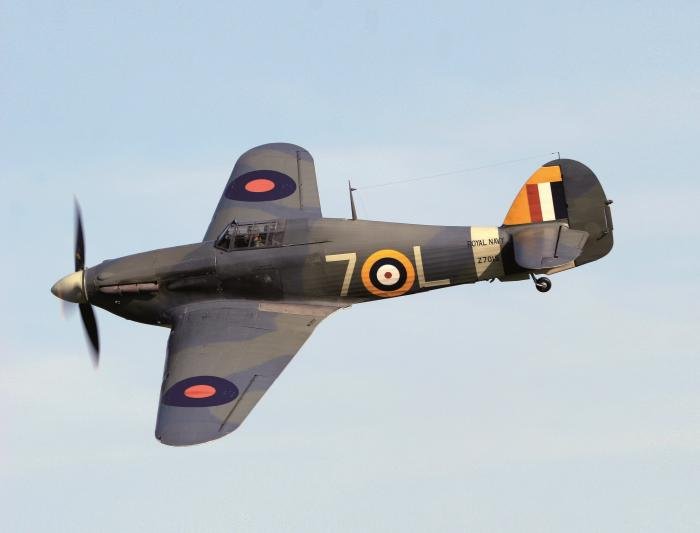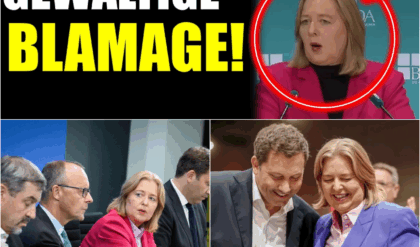
Launched by rocket-powered catapult from ships without flight decks, and later flying from escort carriers, the Sea Hurricane and its pilots fought with incredible distinction, as Paul E Eden explained in the March 2014 issue of Aviation News
Considering the bare facts of its creation, the Hawker Sea Hurricane perhaps ought to have been a failure. Several hundred were produced, all of them by conversion from existing airframes and many of the earlier examples from Hurricanes already pretty much worn out from Battle of Britain combat.
 The Shuttleworth Collection owns and operates Sea Hurricane IB Z7015 from its Old Warden, Bedfordshire base. Built in Canada as a Hurricane Mk I, it first flew as a Sea Hurricane on June 27, 1941. Paul E Eden
The Shuttleworth Collection owns and operates Sea Hurricane IB Z7015 from its Old Warden, Bedfordshire base. Built in Canada as a Hurricane Mk I, it first flew as a Sea Hurricane on June 27, 1941. Paul E Eden
The original Sea Hurricane Mk IA had no arrester hook and therefore could not land back aboard ship – although since the Royal Navy could spare no aircraft carriers from which to operate its latest fighter, this fact was purely academic.
The Sea Hurricane brought all the well established qualities of the land-based Hurricane to the Fleet Air Arm (FAA). These included its rugged, easily repairable structure, high performance – certainly compared to the FAA’s two-seat Fairey Fulmar – and fine ground handling; but also its difficult stall, which was hardly ideal for slow-speed manoeuvring around a carrier.
Catafighter
When the Sea Hurricane entered service in March 1941, the questions of approach handling and deck landing were irrelevant, however, since the Mk IA had been prepared for operation off catapult-equipped ships without carrier decks.
When France capitulated in June 1940, the Luftwaffe gained a series of bases from which to fly long-range reconnaissance over the Western Approaches – in effect a rectangle of sea off the west of the British Isles. Focke-Wulf Fw 200s and Heinkel He 111Hs soon began harassing convoys shipping vital supplies to Britain, to the point where urgent measures were required.
 Sea Hurricane IA V6756/NJ-L was being installed on Empire Tide’s catapult in August 1941. Admiralty via Andy Thomas
Sea Hurricane IA V6756/NJ-L was being installed on Empire Tide’s catapult in August 1941. Admiralty via Andy Thomas
On September 17, 1939, torpedoes from the German submarine U-20 had sunk the aircraft carrier HMS Courageous and on June 18, 1940, the battlecruisers Scharnhorst and Gneisenau sent its sister ship, Glorious, to the bottom. These key losses compounded the difficulties the Royal Navy faced in providing carrier escort for every convoy and some, inevitably, had to go without air support.
Prime Minister Winston Churchill is sometimes credited with providing the simple solution of arming every convoy with at least one fighter, but whatever its origin, a way forward was found in equipping existing ships with a catapult above the bow. The Royal Navy modified five vessels as fighter catapult ships, each with a single aircraft but, with no flight deck available, pilots were expected to engage the enemy before ditching or parachuting from their fighters close to the convoy – seldom was an airfield within range.
Launch was by rocket-propelled shuttle, on top of which the fighter sat with its engine at full power. The catapult was mounted at an angle across the deck, so that if the aircraft failed to reach flying speed it was less likely to fall ahead of the ship, giving the pilot a sporting chance of escape without it running him down. The FAA called for volunteer pilots, equipped them with Fulmars and sent them into action early in 1941.
But the Fulmar was too slow to catch German attack aircraft and the fighter catapult ships were without success until the first Sea Hurricanes appeared on their catapults. Ex-RAF Hurricane Mk I aircraft were modified as Sea Hurricane Mk IA fighters with catapult spools and naval radio and assigned to 804 Naval Air Squadron (NAS) as catapult fighters, ‘Catafighters’ or ‘Hurricats’. Lieutenant Commander R W H Everett scored the first success on August 2, 1941, flying off HMS Maplin and taking down an Fw 200 as it threatened a convoy en route from North Africa.
 The CAM-ship Empire Lawrence and its Sea Hurricane IA ‘LU-S’ as they prepare to join PQ16 for Russia in 1942. Although the fighter successfully engaged an attack on May 25, German bombs sank the ship two days later. Via Andy Thomas
The CAM-ship Empire Lawrence and its Sea Hurricane IA ‘LU-S’ as they prepare to join PQ16 for Russia in 1942. Although the fighter successfully engaged an attack on May 25, German bombs sank the ship two days later. Via Andy Thomas
Meanwhile a programme to equip merchant ships with catapults had begun, producing catapult-aircraft merchantmen, sometimes referred to as catapult-armed merchantmen but more commonly known as CAM-ships. Generally equipped with two Hurricanes each, they relied on volunteer RAF pilots, trained by the Merchant Ship Fighter Unit at Speke, Liverpool; many of the early volunteers had flown in the Battle of Britain. Empire Rainbow, the first of 35 CAM-ships, began its campaign in June 1941, escorting a convoy to Nova Scotia, Canada.
Later the CAM-ships provided vital defence to the North Cape convoys, which were falling under severe attack from Junkers Ju 88 bombers flying from Scandinavian airfields. Empire Morn, the first of six North Cape CAM-ships, departed Iceland on April 26, 1942, for Murmansk with convoy PQ15. Returning as convoy PQ12, the ship launched its Sea Hurricane against Ju 88 raiders. The pilot, Flying Officer John Kendall, destroyed one of the bombers but was killed when he baled out and his parachute failed to open correctly.
 Sea Hurricane IBs, including AF974/7-D and BD771/7-Z, with 880 NAS aboard HMS Indomitable in early 1942. Owen Dinsdale via Andy Thomas
Sea Hurricane IBs, including AF974/7-D and BD771/7-Z, with 880 NAS aboard HMS Indomitable in early 1942. Owen Dinsdale via Andy Thomas
CAM-ships served the North Cape convoys throughout 1942 and continued escorting Gibraltar convoys into July 1943. Some ships employed the 20mm Hispano cannon-armed Sea Hurricane Mk IC, which entered service from January 1942, but it retained the Rolls-Royce Merlin III engine of the Mk IA and was therefore somewhat underpowered with the heavier armament.
Escort carriers
Together, the fighter catapult ships and CAM-ships had won the Royal Navy sufficient breathing space to begin introducing US-built escort carriers. Essentially small aircraft carriers modified from existing vessels, these ships initially embarked a mixed complement of Fairey Swordfish torpedo-bombers and Sea Hurricane or Grumman Martlet fighters.
Now the Sea Hurricane was being produced as the Mk IB, adding an arrester hook to the Mk IA’s meagre naval equipment. The aircraft was at first intended for operation only off escort carriers, flying under difficult conditions to counter fierce German attacks. Among the finest examples of the aircraft’s contribution to convoy escort, the story of PQ18 is worthy of mention.
 JS327 was a 12-gun Sea Hurricane XIIB, flying off HMS Biter with 804 NAS during Operation Torch. It crashed at St Leu, Algiers on December 8, 1942 and shows the revised national markings worn for the operation, with roundels modified as white stars on a yellow-outlined blue background and fin flashes overpainted. The changes were made to help US personnel distinguish British aircraft from those of the French enemy. Via Andy Thomas
JS327 was a 12-gun Sea Hurricane XIIB, flying off HMS Biter with 804 NAS during Operation Torch. It crashed at St Leu, Algiers on December 8, 1942 and shows the revised national markings worn for the operation, with roundels modified as white stars on a yellow-outlined blue background and fin flashes overpainted. The changes were made to help US personnel distinguish British aircraft from those of the French enemy. Via Andy Thomas
PQ17 had departed Iceland on June 27, 1942, bound for Russia. Repeatedly attacked by Luftwaffe anti-shipping units and U-boats, the convoy lost 23 out of its 33 ships. Its lack of air cover had been responsible for much of its suffering, so that after PQ18 sailed from Loch Ewe in the Scottish Highlands for Murmansk on September 3, the escort carrier HMS Avenger joined it off Iceland six days later with 12 Sea Hurricane Ibis and three Swordfish embarked.
Wave after wave of His 11H-6 and Ju 88 bombers attacked, sinking ships but also coming under effective attack from the Sea Hurricanes. Fighting around the convoy continued from September 13 to the 18th, marked on that last day by a final air-to-air combat when a Sea Hurricane Mk IA launched from Empire Morn destroyed two Heinkel He 115 reconnaissance floatplanes.
 On strength with 768 NAS, Sea Hurricane IB P2886/M2H has its arrester hook extended on approach to HMS Argus in 1943. Andy Thomas via RC Sturtivant
On strength with 768 NAS, Sea Hurricane IB P2886/M2H has its arrester hook extended on approach to HMS Argus in 1943. Andy Thomas via RC Sturtivant
In all, 13 out of 39 merchant ships had been sunk, ten of them by aircraft, and four Sea Hurricanes shot down, three by the convoy’s own anti-aircraft fire. Three of the four pilots were rescued. Sea Hurricanes destroyed many of the 41 Luftwaffe aircraft shot down and submarine U-589 was sunk. The Luftwaffe was unable to sustain such loss rates, the Sea Hurricane having helped strike a decisive blow in the convoy war.
Operation Pedestal
Meanwhile Sea Hurricanes remained heavily engaged on convoy duties to and within the Mediterranean, flying from escort and fleet carriers. During 1942 the FAA began receiving the Sea Hurricane Mk IIC, modified from Hurricane Mk IIC standard and therefore equipped with the more powerful Merlin XX engine, which was better suited to the variant’s four-cannon armament. Seventy conversions were ordered to increase the FAA’s escort capability to and through the Mediterranean.
Operation Pedestal was the most important convoy escort duty of the Sea Hurricane Tic’s career and perhaps the type’s largest battle of all. Under a continuous pounding from German and Italian bombers, Malta was in urgent need of resupply. Axis anti-shipping aircraft and submarines were inflicting heavy losses on supply convoys and Operation Pedestal was planned to provide a relief convoy that simply had to make it through.
 With a Swordfish ranged on the flight deck, 825 NAS Sea Hurricane IICs ‘S’ and ‘H’ are spotted with their tailwheels supported a good way over the carrier’s side. The ship was HMS Vindex, in 1944. F MacTavish via Andy Thomas
With a Swordfish ranged on the flight deck, 825 NAS Sea Hurricane IICs ‘S’ and ‘H’ are spotted with their tailwheels supported a good way over the carrier’s side. The ship was HMS Vindex, in 1944. F MacTavish via Andy Thomas
The convoy passed through the Straits of Gibraltar into the Mediterranean on the night of August 11/12, 1942. Its 13 merchant ships had joined up with SS Ohio, a tanker carrying 12,000 tons of fuel oil – Malta had sufficient fuel to last only into September. They boasted an escort of two battleships, six cruisers, an anti-aircraft ship, 24 destroyers and three fleet carriers, HMS Eagle, Indomitable and Victorious. The carriers embarked a mixed fighter force of 33 Fulmars and Mart lets and 39 Sea Hurricanes, ranged against German and Italian forces that could muster in excess of 600 combat aircraft.
The first strikes came from Italian Savoir-Marchetti SM.79 bombers, even as the convoy was recovering from an early submarine attack that sank Eagle with the loss of 16 aircraft. The naval fighters countered a subsequent Ju 88 attack, but a further raid came in with Mache MC.202 and Messerschmitt Bf 109F fighter escort. Again the Sea Hurricanes and other FAA aircraft engaged, but in a quick follow-up raid Junkers Ju 87D dive-bombers scored telling hits on HMS Indomitable.
Those of Indomitable’s aircraft airborne when it was bombed landed back aboard Victorious, now the sole carrier in the battle. The FAA lost 13 aircraft during the day and 11 merchantmen had either been sunk or were unable to continue. The fight continued on the 14th, but next day the surviving ships made it into Malta’s Valetta harbour. Among them, the damaged Ohio delivered enough fuel for the island’s needs until December, by which time Axis power in the region had been seriously eroded. Malta was saved and once again the Sea Hurricane had been instrumental in a vital convoy battle.
Operation Torch
Some of the CAM-ship Sea Hurricane Mk IA conversions had been Canadian Hurricane Mk Is – and while the Canadians developed their own Sea Hurricane Mk XI and XII variants (the Mk XIB and XIIB having 12-gun wings), the Hurricane Mk X, Mk XI and XII now provided the basis for a number of Sea Hurricane Mk IIC carrier fighters. The Mks X and XI used the Packard-Merlin 28 engine and the Mk XII the Packard-Merlin 29, both similar to the Merlin XX – and when the Sea Hurricane entered its final major combat operation, all the Mk IICs involved were based on Mk X and XII stock.
 A Sea Hurricane IIC ‘takes the wire’ aboard Vindex in 1944. The 825 NAS pilot has opened the cockpit canopy, improving his view around the nose on approach and in preparation for a quick exit should the landing result in a crash. F MacTavish via Andy Thomas
A Sea Hurricane IIC ‘takes the wire’ aboard Vindex in 1944. The 825 NAS pilot has opened the cockpit canopy, improving his view around the nose on approach and in preparation for a quick exit should the landing result in a crash. F MacTavish via Andy Thomas
By November 1942 the Allies judged the time was right for North African landings. Axis forces were on the back foot after defeat during the Battle of Alamein and landings in Morocco and Algeria would oblige them to engage in battle on two fronts.
The huge force of ships and aircraft amassed for the landings, under Operation Torch, included three fleet carriers (one American) and seven escort carriers, the three British ships among the latter – HMS Avenger, Biter and Dasher – all embarking Sea Hurricane Mk IICs, although the Supermarine Seafire had by now replaced the type on the fleet carriers. Torch began on November 8, FAA aircraft attacking ground targets as well as fighting in the air, initially facing determined opposition from local Vichy French units.
Hitler responded to the landings by ordering his troops into the unoccupied zone of southern France on November 11, breaking the final vestiges of loyalty the Vichy had to his cause, but not before French Dewoitine D.520 fighters had wiped out all eight Fairey Albacores despatched on a strike from Victorious. The response came from Biter and Dasher, which between them launched 12 Sea Hurricanes for the destruction of five of the D.520s. With resistance waning, the loss of Avenger – along with most of its crew and 14 Sea Hurricanes – to U-155 on November 15 must have come as a severe blow.
 In summer 1944 HMS Nairana’s Sea Hurricane IICs received a coat of white paint over their regular camouflage. The 835 NAS aircraft, represented here by NF672/7K, were left with only the camouflage on the upper surface of their engine cowlings showing as an anti-glare panel. Via Andy Thomas
In summer 1944 HMS Nairana’s Sea Hurricane IICs received a coat of white paint over their regular camouflage. The 835 NAS aircraft, represented here by NF672/7K, were left with only the camouflage on the upper surface of their engine cowlings showing as an anti-glare panel. Via Andy Thomas
With the Seafire, Grumman Hellcat and Vought Corsair all entering service in increasing numbers into 1943, the Sea Hurricane fell into decline. Some found second-line use, although many remained on North Cape and even Pacific convoy duties. It was in the latter theatre that the type saw its final frontline service, flying off the escort carriers HMS Vindex and Nairana late into 1944.
Never ideal as a carrier fighter, the Sea Hurricane nevertheless took to sea all the attributes of the stalwart Hurricane. The Hurricats provided an essential stopgap while a class of escort carrier was assembled for convoy protection, the Sea Hurricane becoming the aircraft of choice for those brave new ships. There can be no doubt that the type played a vital role in halting the Axis advance during the dark years of 1941-43.





